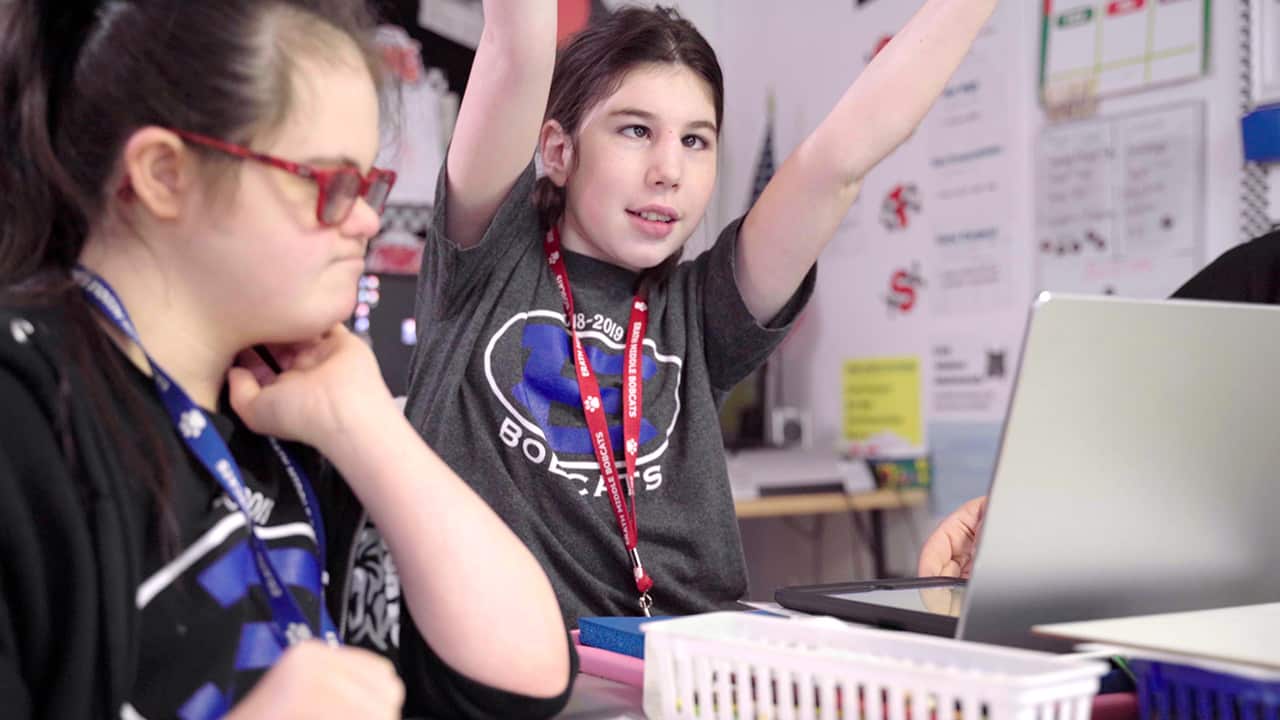Calming Tools and Strategies
A calming tool can take a variety of forms (putty, beads on a string, bingo chips, or weighted blanket, to name a few examples) but its most important quality is the ability to help a student calm down when anxiety is building. While a calming tool is often seen as a toy a student likes or a trip to the sensory room for five minutes on the swing, this is the wrong way to think about it. Students may enjoy playing with blocks or toy cars but that might not give them the calm feeling they need. Observing the student to see what they gravitate toward when getting upset or trying a variety of tools to see what calms them can be helpful in deciding what solution to settle on.
When choosing a calming tool for a student, there are some key things to keep in mind:
- It should be something that can fit in their own space.
- Make sure it is accessible to the student whenever they need it.
- Avoid items that would be distracting to the student or others around them.
- Be sure to delineate a clear beginning and ending for using the tool.
Additionally, proper use of the calming tool should be taught directly. Start with modeling and one-on-one instruction. This is often easiest to initially introduce to the student when they are calm. When a student begins to become anxious or upset, present the calming tool and prompt them to use it, telling them why you are giving it to them. Say something like, “It looks like you are getting anxious. Let’s try to calm down using our bingo chips.” Then help them through the process of using the calming tool, followed by verbal praise when they are calm. With enough practice and scaffolding, the student should begin to recognize their own need for a calming tool and use it to calm down independently. Remember that students are still learning how to use calming tools and will not always use them correctly. It is best to reteach and redirect the student rather than taking the tool away.
Break Cards and How to Use Them
Taking a short break from work is something everyone does and it’s often built into many work or school days. Students with unique needs often need more breaks than their typical peers. Just as with a calming tool, it is imperative to directly teach the process of asking for a break and also what to do on a break to calm down, and this is best done when the student is calm. A great way to teach this self-regulation strategy is to give the learner a set number of break cards, either for the whole school day or just one or two class periods. This serves two functions. First, it is a visual reminder that a break is available if they need it and second, it teaches them an appropriate way to ask for a break. See our guide to break cards to see how to implement them in the classroom.
Deep Breathing for the Classroom
Deep breathing is one of the most common calming strategies people use. People use deep breaths to refresh their mind, give themselves a few moments to think, and deliver a calming effect on the body. In fact, “take a deep breath” is often the first thing someone says when they see someone who is upset. Deep breathing is effective, but keep in mind that first and foremost the learner has to know how to take a deep breath. Turning deep breathing into a game, like blowing feathers off a table or taking turns blowing bubbles, can help learners understand the concept of deep breathing. Visual aids with arrows or numbers to count the breath in and count the breath out are great supports for learners. Adult modeling and having the student imitate the adult’s breathing is also an easy way to teach this skill.
Teaching self-regulation strategies like the use of calming tools, break cards, and deep breathing can help students manage their own behavior so that they can more effectively use the incentive chart. With a token economy (the stickers and stars), the goal is for students to work for longer periods between earning backup reinforcers, ultimately learning to generalize the target behavior without the need for a reward. It also helps to make sure the incentive is high value by allowing the student to select the reward. As with the calming strategies, It’s important to train students in how tokens are earned and delivered, even modeling the procedure. In order to be receptive to learning, students must be able to self-regulate; being able to help your students develop positive behaviors and endurance in the classroom is laying the groundwork for all learning to occur.



